I drove a friend to the airport today – she’ll be flying through Hawaii and stopping over for a few days. Rather than staying on Oahu or going to Maui or the Big Island, like most tourists, she’s going to Molokai and is even going to see my parents. I’m so jealous I could cry. I love Wellington, and I love my life, but I miss my islands desperately.
As I drove away from the airport, back to my little house to spend an afternoon baking, I thought of another island maid, torn between two cultures and dreadfully homesick for her own islands as she studied in a cold land halfway across the world. Ka’iulani, the last princess of Hawaii, also loved her temporary adopted homeland, but she must have missed her home as much as I do: missed the tradewinds, and the easy warmth of the people, missed the endless green lawns of her home, the soft sound of the waves hitting the shore.
But I’m getting ahead of myself just a little. This story starts much earlier.
Hawaii today is the 50th state of the USA, but in the 19th century, it was an independent kingdom, recognised by all the major powers in the Pacific arena. Staying independent in the face of the imperialist ambitions of major European and American powers had always been a delicate balancing act for Hawaii. England had Australia and New Zealand, Tokelau from 1877, and the Cook Islands from 1888. Germany had strong interests in Samoa, which would eventually lead to their annexation of Western Samoa as German Samoa in 1900. France had Tahiti. Spain had the Philippines. And America looked West covetously, and saw the deep waters of Pearl Harbour as the perfect stepping stone across the Pacific.
Hawaii retained its independency in the face of these stronger powers by playing them off each other, and getting all the major Pacific powers to agree that Hawaii remain independent. Still, safety was fragile. The US & UK almost ended up at war with Germany over a confrontation in Samoa in 1887, and any shift in the Pacific powers could destroy the truce over Hawaii.
Hawaii itself aligned most closely with Great Britain. Rather than blaming Great Britain for the Paulet Affair, when a British naval Captain occupied Hawaii for half a year, they credited Queen Victoria with restoring their independence. Queen Victoria had agreed to be godmother to a Hawaiian prince in the 1860s, and Hawaiian monarchs modeled themselves on their English counterparts. At one point Hawaii, fearing an American takeover even petitioned to become a British Protectorate and a member of the Commonwealth, as that was far preferable to being annexed by the US. Great Britain, fearing the repercussions (as they had agreed that Hawaii remain neutral and independent), refused.
To add to the delicate situation in Hawaii, the Hawaiian monarchy was in a literal decline. Monarchs died young, without children. When they did have children, those children died in infancy or childhood. The crown passed to cousins, and nephews, and finally became an elected issue – with candidates chosen from the few remaining descendants of Kamehameha I.
Thus, when Princess Victoria (named in honour of the British Queen and her role in the Paulet affair) Ka’iulani (the royal sacred one) daughter of a Hawaiian princess and a Scottish immigrant, was born in 1875, it was a cause for celebration throughout Hawaii. Her uncle KalÄkaua had become king the year before, and she would become second in line to the throne, after her aunt, Lili’u’okalani.
Ka’iulani had a happy childhood, despite personal tragedy (she lost her mother at 9), and growing problems in Hawaii. KalÄkaua tried to promote ‘Hawai’i for Hawaiians’, but numerous foreign interests, most notably American businessmen, resisted any attempts to limit their power. Over the course of the 19th century the common Hawaiian’s had lost most of their land. They had seen their language replaced by English as predominant language for government and business: severely limiting the ability of anyone who didn’t speak English to negotiate legal and business deals. And now foreign interests wanted to control the government itself.
In these times of unrest Ka’iulani was seen as a beacon of hope. She was intelligent, charming, a talented artist and musician, and astonishingly beautiful by any standard. She met painters and poets (Robert Louis Stevenson wrote a poem for her, calling her “bright of heart and fair of face”), and won over world leaders and the public alike.
As Ka’iulani grew the question of her education arose. As the heir apparent, she needed to be fit to rule. Mills College in Oakland, California was considered, as Susan and Cyrus Mills had strong links to the Hawaiian monarchy and had run Punahou School in Hawaii. Hawaii was growing increasingly wary of the US, and Ka’iulani’s Scottish father favoured a UK education, so she was sent to England, to receive a private education there.
She set sail in 1889, for what was planned as a one-year trip. She would not see her islands again for 9 long years, until 1897, and by that time, they would be lost to her.
In 1891 KalÄkaua died, and Lili’u’okalani ascended to the throne. Foreign powers saw a woman ruler as weak and easily controlled, and moved in. The foreign press subjected the Queen to increasingly racist vitirol: cartoons depicted her as a monkey, or bare breasted in a grass skirt. She attempted to create a government of Hawaiians, for Hawaiians, and the American sugar planters and businessmen made their move and overthrew the government by force. Ka’iulani, exiled at the other end of the world, was desperate to be home. She was told that what she could do most to help was to stay in Europe and appeal to foreign powers for help.
She travelled: in England, in France, in other European countries, and finally to America, petitioning governments, meeting with dignitaries, appearing at functions. The newspaper reports that preceded her talked of ‘half castes’ and ‘dusky maidens’. Her grace and charm, her speeches in English, French, German, and very occasionally, Hawaiian, silenced them.
But the news got worse, not better, in every possible way. Stevenson died in Samoa. Ka’iulani’s beloved half sister, Annie Cleghorn, passed away. President Cleveland, who had been sympathetic to Hawaii’s plight, and distrustful of the businessmen and their claims, lost the election to the imperialist McKinley, who coveted Hawaii as a stepping-stone in the Pacific. And Kai’ulani’s health was failing. She suffered from migraines and other complains (possibly a thyroid disorder), and found it harder and harder to continue.
Finally, in 1897, she came home. She tried to rest. She tried to re-build a life that had been built on the premise that she would be Queen. She continued to work for independence for her country. She got engaged to Prince KawÄnanakoa, the highest ranked available Hawaiian Prince, in a move that was more about ensuring the monarchies future than romantic love. And she got more and more ill. In 1898 she caught a cold, and this turned into fever and pneumonia. In a healthy 23 year old, the cold would have been nothing, but Ka’iulani had lost the will to live. She declined all through the winter of 1898-99, and passed away in March 1899. Her father said it was fitting that since Hawai’i was lost, Ka’iulani was lost as well.

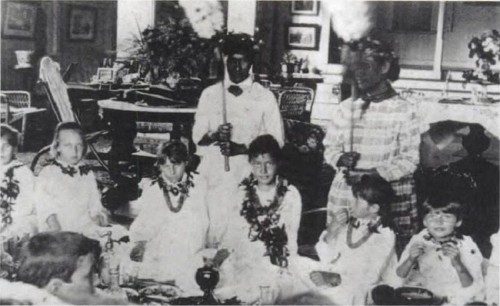
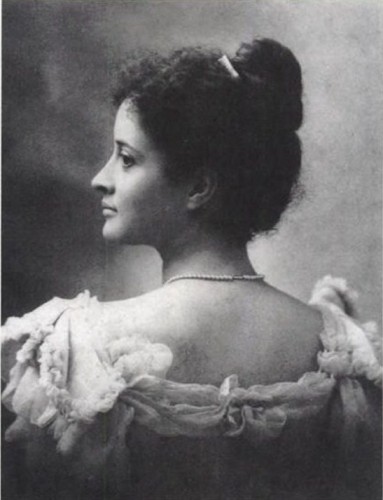
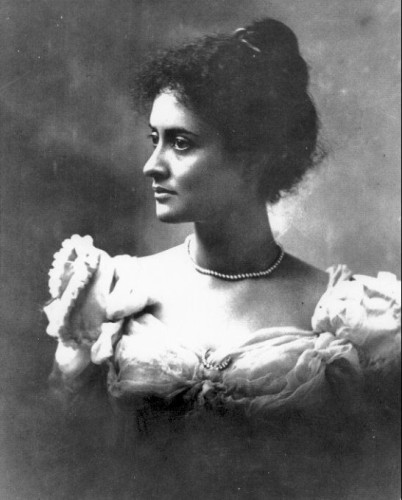
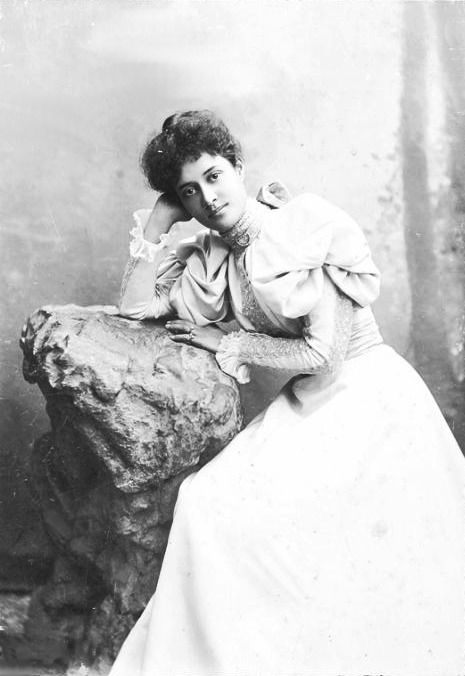
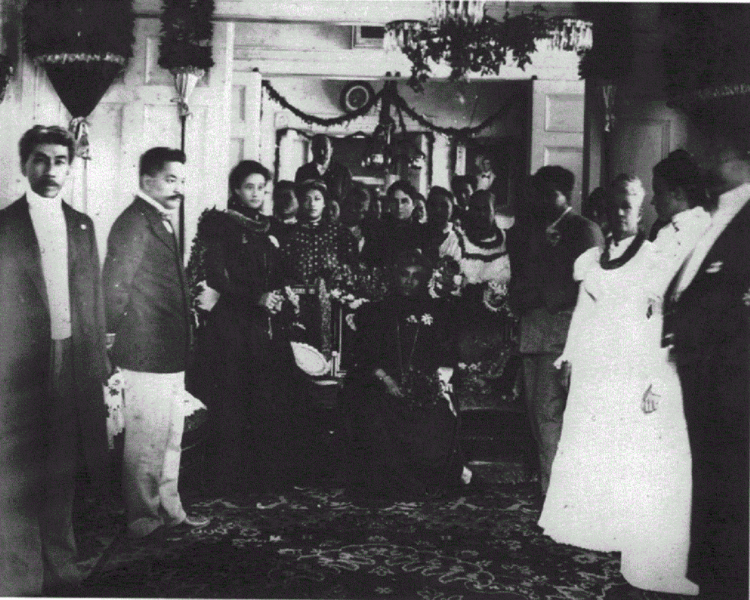
It’s been said that history is written by the victors. As someone born in the U.S., I’ve never heard the story of how Hawaii was basically forced into statehood, but it doesn’t surprise me, as I my great-great-grandmother was a Cherokee native American. It’s sad that we’re only told part of the story or even none of it at all, if it doesn’t fit what we’re supposed to believe or know. I’m not sure who decides what to leave out of our history books, but as a homeschooling mom, I’m trying very hard to teach my kids as much of the whole story as I can. Thank you for sharing.
It certainly is. Hawaii didn’t become a state until after WWII (and then it was more or less forced into Statehood).
I was homeschooled for 2 years in high school, and my Mum was adamant that we would learn more than just the Western-centric history that is taught in schools, so I spent two years studying Asian and African history, and different perspectives on Western History. I remember that we actually used The Cartoon History of the Universe as a textbook – and it did give me a much more accurate broad historical overview than any ‘normal’ textbook! Thank you for also giving your children a bigger picture.
Dear Leimomi,
Like Sarah, I had not known what happened to Hawaii; it was not taught in school. Your retelling left me teary-edged; so much of human-history is tragic and blood-soaked. Like Sarah too, one of the great grand ancestors of my husband’s family was Cherokee, but all we have left of her memory is her name and her likeness, etched into our boys’ faces, for those to see who can.
May you return to your beloved islands for regrowth and respite very soon, and hugs,
Natalie
Thank you Natalie. Hawai’is history does seem particularly tragic – I ‘ll have to find a happy, or at least a bit more uplifting, story to tell next time.
Thanks for the history. I love it. I spend weeks in Hawaii teaching environmental law each year — and love to study the history while I am there on Oahu (Queen’s Summer Palace, Bishop). I appreciate the detailed story. I think the story of the takeover of Hawaii to the United States is a sad one, indeed. I know Hawaii still hasn’t recovered in many ways.
You’re welcome!
While the takeover was sad, and many tragic things happened in Hawaii, I compare Hawaii to other Pacific island nations, and I’m not certain that it came out the worst. The US’s involvement has been bad in many ways, but it has had many benefits too. It’s certainly hard to second-guess history.
(and lucky, LUCKY you getting to teach in Hawaii each year!)
Hawaii became a state in 1959, the year I was born.
Thank you for Ka’iulani’s story. Hawaiian history is a subject about which I know very little, and as a white East Coast resident I knew nothing about Ka’iulani herself. It is sad, for her personally and for Hawaii, that she got none of the breaks she would have needed to help her people. If she had, history would have been changed, probably for the better.
I hope you get to visit Hawaii and your family there soon!
That’s absolutely right – decades after it was annexed, and only once the UN basically ordered the US to de-colonise it.
I wonder what would have happened in Ka’iulani had lived. The princes who survived, her fiance and Jonah Kuhio, both were able to have considerable influence in helping the islands. Prince Kuhio day is still celebrated statewide.
Thank you for sharing. I had never heard of her until a few years back when there was a movie on Netflix. It always saddens me how much of history is not taught to us, and how what we were taught in school was pretty much bs.
She was very beautiful.
The actress that played her is beautiful, but I had been disappointed that they didn’t use someone who was actually Hawaiian or at least Polynesian descent.
Yes, there was a movie made of her recently. I haven’t seen it: I just couldn’t reconcile the actress with the princess I had always imagined, so avoided it. It was really disappointing that they didn’t find an actress from the islands. Did you enjoy it?
I did enjoy the movie. I’m sure it was not 100% authentic, but it brought the overall story, and I love movies about pieces of history I didn’t know about, it always inspires me to hit the internet and try to learn more.
I’m actually a fan of the actress who played her, Q’Orianka Kilcher (cousin to the singer Jewel). I can’t remember the name of the tribe, but her mom descends from a native South American tribe. She played Pocahahontis. They seem to typecaste her whenever they are looking for any type of “nativey” role. She did fine with her portrayal of Ka’iulani. I just felt that they really should have used a Hawaiian actress. With so few good roles available for actresses of island descent it was just a shame.
When I taught at University of Hawaii at Manoa while finishing my MA, there were several students who could have brought the layers and maturity-in-a-young-face vim to the role. They also had the ancestry to make the portrayal whole. Too bad. And too bad that the actress who did play her keeps getting typecast…
I’m not sure I entirely believed it needed to be a Hawaiian actress, though there is a way of moving and holding yourself that you get from the islands that Q’Orianka didn’t capture for me. I just had a vision of how Ka’iulani was as a person, and it wasn’t my vision (like a book where you imagine the lead character and who they cast doesn’t fit at all).
It really is a shame that they only cast actors with distinct ethnic looks for parts where that is specified – not random generic romantic comedies and dramas etc.
Nice…I attended an event at the palace in which they allowed us to take our own mini tour..I have photos of myself in a few rooms, living room, bedroom, etc….It was a lovely place…
Oh, lucky you! I’ve toured the palace numerous times, and watched the ongoing restoration and re-discovery of all the pieces that belonged the palace, but I’ve never been to an event there. I’ve been to events at Washington Place, which is now the governor’s residence.
I blogged about visiting ‘Iolani Palace a wee while back: https://thedreamstress.com/2013/06/iolani-palace/
I love your Hawaii history posts, even if they are sad… as others mentioned, it is something you never learn about – if not in the US, then even less so in the Czech Republic!
I ran into a painting of hers on Wikipedia. She was clearly widely talented!
Thank you Hana! One of the things I love about the blog world is that you learn about all these things you’d have no reason to be introduced to otherwise. I know so much more about the little bits of the Czech republic from your blog.
Her painting is a little late-Victorian ladies for my taste, but is lovely.
These stories need to be told again and again. Will humankind ever manage to curb this seemingly unending urge to invade and dominate the countries of others? The conquerors are often people who would never think of stealing from someone in their own country, but who find it perfectly acceptable, even admirable, to steal whole countries, as if they were doing the conquered a favour.
Poor Princess Ka’iulani. Everything seemed to be pointing to that unhappy ending. I have just been watching a video clip doing the rounds of a rat trying vainly to get down the up escalator in a tube station. One of the awful metaphors, and the story of the Princess is another such.
At least your beautiful home is safe, and will be waiting there for your next trip home. No nine-year-long exile for you, dear Dreamstress!
Hear hear! It’s just another instance of power corrupting – people thinking they have the right to be on top.
I have really enjoyed learning about your home state from your blog. Thank yiu for sharing. I’m curious about why the royals had a hard time having children. Do you know anything more about it?
Thanks Sallie! There isn’t a specific reason why the royal family had problems having children, though the population of native Hawaiians as a whole was decimated in the 19th century due to introduced diseases. And it wasn’t just problems conceiving – a lot of children died young. There were also probably repercussions from the missionaries imposing new delivery and child raising methods which weren’t suitable for the Hawaiian climate, or which were combined with existing traditions badly. And, of course, the 19th century as a whole had pretty high infant mortality rates.
There was talk in the 19th century of a traditional curse on the Kamehameha Dynasty, but I’ve never read an academic discussion of why there might have been one – just quotes of chiefs saying things along the lines of ‘alas, we are cursed’ etc.
Yes! Thank you for sharing! As an Arizonan, it’s so weird so the only history we learn (besides vague references to Manifest Destiny and Imperialism) is east-coast, WASPy, and decidedly post-1607. There is so much to talk about, and we are denying our students (especially our students of color) a chance to see their own ancestors take part in US history.
I also find it interesting how much US history books DON’T talk about happy, binational couples. Kit Carson married a Spanish woman. Kaiulani was the product of another mixed couple. But I think that many people are still uncomfortable with a mixed-race family, so they conveniently leave that out.
So thank you so much, Dreamstress, for giving a voice to a great need to tell these stories. I will add, of course, that it is so possible to tell stories that can include anyone. The TV show Sleepy Hollow has one of the most diverse casts on American TV today despite much of the subject occurring during the Revolutionary war–often depicted as all-white. I believe that if we remember that US history includes ALL Americans and is presented for all Americans–as this column has–Americans can be so much richer. So thank you.
Poor Ka’iulani. Her story is like something out of a Greek tragedy.
Leimomi, if it wasn’t for you I’d know virtually nothing about Hawai’ian history. Your posts about Hawai’i are always interesting and I always learn a lot from them, so thank you.
Thank you for your Hawaii posts, I always find them fascinating. I’d never heard this history till your post about visiting the museum/ palace. Although a lot of the nineteenth century dynastic change is the sad history of colonialism, similar stories are playing out in more recent times too. I guess making s think about that is part of the job of history. I also applaud your mother for making sure you were exposed to the history of the world. 30 years after school I still know very little of pre-colonial African history, and not much of Asian history. Good for her.
Oops, sorry for duplicating! I didn’t think the first had worked so fixed my typos and resubmitted. Sorry!
Aloha kaua…
I appreciate your articulate retelling of Ke Ali’i Ka’iulani’s story…it obviously has introduced a new audience to the all-too-often still unfamiliar truth of Hawai’i’s submerged nationhood. I do not share the idea, however, that Ka’iulani ever “lost the will to live”. She expressed cynical and bitter mana’o about the injustices of the time, but had she not suffered complex pathologies at the end of her life I think there is sufficient evidence from her known character and behavior that she would have worked her way through it and done something with her life in the service of her people. The “wilting-away” image that persists of her is a holdover from 19th century attitudes about the supposed emotional and psychological weakness of women and non-whites ( and was useful to turn of the century spin-doctors to help justify the overthrow of Hawai’i and Hawaiian culture…basically weak and “feminine”.) The “fairy tale” of the ” tragic princess. Her illness and unexpected death were tragic…but if Tapazol had been available back then, she might have lived a normal lifespan, give her wry sense of humor and general zest. (Sick as she was, she was joking with the fellows carrying her down from Mana to the boat returning her to Honolulu.). I often fancy she might have become a modern artist and shocked Honolulu with murals burlesquing the society that usurped the place of the Monarchy…